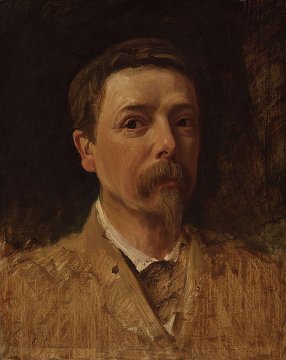 Occasionally a book finds its way to your hand that seems as if the author
had you in mind personally when he wrote it. This one's for you,
Ron. It is as though his mind is communicating directly with yours
over perhaps centuries. A couple two or three decades ago one such
work that came to my hand was The Secret
Memoirs Of The Duc De Roquelaure. I never would have bought
it myself, never even suspected its existence, but it came in a bundle
of books I bid on at auction containing another book I wanted.
Occasionally a book finds its way to your hand that seems as if the author
had you in mind personally when he wrote it. This one's for you,
Ron. It is as though his mind is communicating directly with yours
over perhaps centuries. A couple two or three decades ago one such
work that came to my hand was The Secret
Memoirs Of The Duc De Roquelaure. I never would have bought
it myself, never even suspected its existence, but it came in a bundle
of books I bid on at auction containing another book I wanted.
I had the four volumes
of the Duc's life so I read them. The memoirs were 'Written by himself
now for the first time completely translated into English in four volumes.'
Thus in 1896-97 an intermediary on the same wave length as the Duc and
myself provided the means for me to read the Duc's mind. Believe
it or not the edition was limited to 1000 copies, privately printed of
which 500 were for England and 500 for America. Mine is number 424
of the English set.
There could have
been few who had ever read the Duc and I may very well be the only man
alive at the present to have shared the Duc's thoughts. Truly I believed
he was speaking directly to me over the 400 intervening years.
I had the same
feeling when I read George Du Maurier's three volumes published from 1891
to 1897. Curious that the Duc de Roquelaure should have been translated
in 1896-97 isn't it? Like the Duc, George Du Maurier seemed to speak
out to me over more than a hundred years to communicate directly with my
mind.
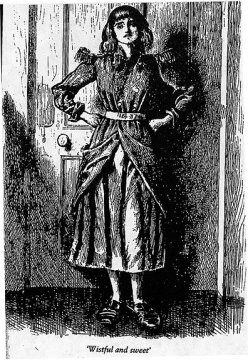 I probably never would have sought out his books except for my Edgar Rice
Burroughs studies. I wanted to check out whether there may have been
a connection to Burroughs through the second of the novels -- Trilby.
Then browsing the store I came across a Modern Library 1929 edition of
the first of Du Maurier's efforts -- Peter Ibbetson. At that
point, I thought, I might as well get the third -- The Martian --
which I did. This time over the internet.
I probably never would have sought out his books except for my Edgar Rice
Burroughs studies. I wanted to check out whether there may have been
a connection to Burroughs through the second of the novels -- Trilby.
Then browsing the store I came across a Modern Library 1929 edition of
the first of Du Maurier's efforts -- Peter Ibbetson. At that
point, I thought, I might as well get the third -- The Martian --
which I did. This time over the internet.
I have now read
each title three times as is my habit if I'm going to review a book.
Before moving on to the novels it might be appropriate to say a few words
about Du Maurier, who may be an unfamiliar name to the reader although
he or she may be familiar with the name of his very famous creation, the
hypnotist and musician Svengali of the Trilby novel.
Du Maurier was
born in 1834 and died in 1896 so he was ideally situated to view the whole
Victorian era. Indeed, in his own way he was a symbol of it.
As a most famous illustrator of books and an artist satirizing the era
for the humorous magazine Punch, he in many ways interpreted English
society for itself for nearly fifty years.
He died of heart
disease so when he turned to writing to begin what is his virtual literary
epitaph in 1891 it may have been with the premonition of his imminent death.
He sensed that it was time for a summing up of the life he loved so well.
Heart ailments figure prominently in his work. Indeed he died of
a heart attack just after finishing The Martian which began publication
shortly after his death. Thus, while portraying the scenes of his
life in Punch and other magazines and books, he summarized his life
and times magnificently in his three novels.
They are magnificent
works. As every man should, Du Maurier loved his life and it was
a life worth living. The novels are wonderful examinations of exotic
altered states of consciousness. In Peter Ibbetson the protagonist
is insane, committed to Colney
Hatch or some such. At night in his dreams he finds a way to
link his dream with the dream of a married woman on the outside.
She and his dreams meld into one dream in which they live actual alternate
dream lives that are as real as their daytime existences. This went
on for a couple decades or more until the lady died. Very eerie.
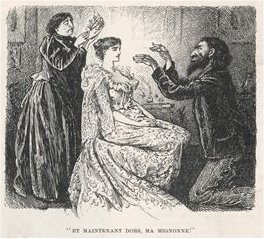 In Trilby, in a love contest between the protagonist Billy and the
musician Svengali for the hand of Trilby, Billy is denied his love for
societal reasons while after a sequence of events Trilby falls into the
clutches of Svengali who through hypnotism turns her into a Diva.
After his denial Billy becomes temporarily deranged falling into a deep
depression which then turns into an equally severe melancholia when he
emerges from the mania. So once again we have a description of two
altered states of consciousness.
In Trilby, in a love contest between the protagonist Billy and the
musician Svengali for the hand of Trilby, Billy is denied his love for
societal reasons while after a sequence of events Trilby falls into the
clutches of Svengali who through hypnotism turns her into a Diva.
After his denial Billy becomes temporarily deranged falling into a deep
depression which then turns into an equally severe melancholia when he
emerges from the mania. So once again we have a description of two
altered states of consciousness.
In the third and
last novel the protagonist is possessed by an alien intelligence named
Martia from Mars. Over the last century she has inhabited thousands
of people but only with the hero, Barty Josselin, has she been able to
establish contact. In an absolutely astonishing twist she occupies
the body of Bartyís daughter. Both Barty and the daughter die enabling
Martia to unite physically, in the spirit world, with her love. Thus
the father and daughter are united which I suppose is the dream of many
a father and daughter. The effect on the reader, this one anyway,
is ethereal and eerie.
Du Maurier injects
real life figures into his fiction. The real personalities of the
day lend credibility to the fiction. Du Maurier involves himself
in the stories in ingenious ways. While one can't definitely say
that Burroughs learned to inject himself into his stories from Du Maurier,
yet the framing devices in which Burroughs plays himself are very reminiscent
of Du Maurier.
For instance in
The
Martian the story is a biography of Barty Josselin told by his
friend Robert Maurice, who then asks George Du Maurier the famous
Punch
illustrator to illustrate and edit his book. So the biography is
ostensibly told in the first person by the fictional Robert Maurice while
it is illustrated by the real life George Du Maurier who posing as the
editor is actually writing the book. Du Maurier even inserts a long
letter of acceptance in which he recapitulates his memories of Barty.
When one realized
this the effect is almost supernatural, especially as with a little background
on Du Maurier one realizes that the histories of the protagonists are virtually
fictionalized histories of Du Maurier himself.
Thus while I haven't
discovered a direct connection to Du Maurier, ERB is always telling a fictionalized
account of his mental states along with a virtual chronicle of his life.
A few points in ERB's The
Eternal Lover bear a very close resemblance to the love themes
of Du Maurier, especially in Peter Ibbetson and The Martian.
The Martian itself
may have been a major influence on Burroughs' own Martian novels.
When John Carter, who was always attracted to Mars, stands naked on a cliff
face in Arizona with his arms outstretched toward the Warrior Planet, the
scene is very reminiscent of Barty Josselin leaning with out stretched
arms from his window staring at Mars and imploring Martia for her assistance.
Carter is magically
transported to Mars in some unexplained way that may have been no more
than an altered state of consciousness much as in the same way Martia inhabited
Barty's mind and body. Once on Mars Carter finds his lady love, Dejah
Thoris, in a manner reminiscent of Barty and Martia. Obviously other
literary influences abound in ERB's Martian series but at the core very
probably is Du Maurier's story of Martia and Barty. By 1911 the influence
was coming from ERB's subconscious and he may not have been aware of the
resource he was drawing on.
The question is
when did Burroughs read, as I believe he did, the three Du Maurier novels?
As ERBís first novel, A
Princess Of Mars, had to be built on the Martian it follows
that ERB read Du Maurier before 1911. Du Maurier wrote from 1891
to 1896. His novels were serialized in Harper's Magazine in
the US either before or at publication so Burroughs had the opportunity
to read them in magazine format as well as the books.
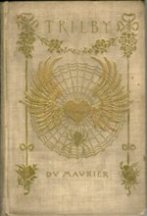 Of the three novels, Trilby was an absolute smash being one of the
biggest sellers of the nineteenth century. The sensational story
of Trilby and Svengali that everyone concentrated on would certainly have
brought Du Maurier to ERB's attention.
Of the three novels, Trilby was an absolute smash being one of the
biggest sellers of the nineteenth century. The sensational story
of Trilby and Svengali that everyone concentrated on would certainly have
brought Du Maurier to ERB's attention.
At the time
his own life was in turmoil. At the time Trilby was published
ERB was in the process of leaving the Michigan Military Academy at which
he was employed for what he thought was a career in the Army. Once
at his assignment, Fort Grant in Arizona, he would likely have had the
odd idle moment to either read the magazine installments or the book.
As Carter's transfer
to Mars takes place in Arizona there is an association with ERB's army
days and Du Maurier's The Martian. Not proof positive, of
course, but not impossible or improbable either. He must then have
read the last volume in Idaho when he owned his stationery store there
in 1898 and could obtain any book or magazine he wanted, either English
or American.
So these
wonderful other worldly stories of Du Maurier gestated in his mind for
twelve or thirteen years before emerging from his forehead beginning in
1911.
I will now review
the novels in detail. These are spectacular, wonderful stories.
First the middle volume -- Trilby -- then the last of Du Maurierís
works -- The Martian -- followed by the first, Peter Ibbetson.
Web Refs
Trilby
eText
The
Martian eText
Peter
Ibbetson eText
Secret
Memoirs Of The Duc De Roquelaure eText
Wikipedia
Bio
Biography
Du
Maurier: Book of the Month
George
Du Maurier, the Satirist of the Victorians
Svengali:
1914 film
Svengali:
1927 film
Svengali:
1931 film
Trilby:
1914 film
Trilby:
1915 film
Trilby:
1923 film
Peter
Ibbetson: 1935 film (ERB Connection: John Halliday)
Peter
Ibbetson: Wikipedia entry
Thuvia,
Maid Of Mars
The
Eternal Lover
A
Princess Of Mars
Gallery
of PUNCH Cartoons

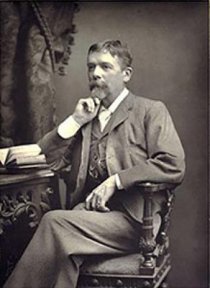
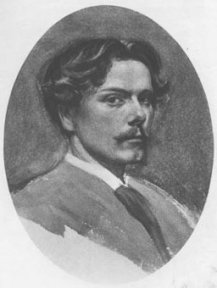
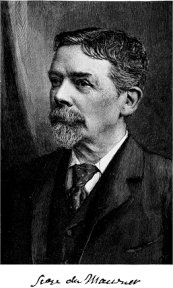
 Occasionally a book finds its way to your hand that seems as if the author
had you in mind personally when he wrote it. This one's for you,
Ron. It is as though his mind is communicating directly with yours
over perhaps centuries. A couple two or three decades ago one such
work that came to my hand was The Secret
Memoirs Of The Duc De Roquelaure. I never would have bought
it myself, never even suspected its existence, but it came in a bundle
of books I bid on at auction containing another book I wanted.
Occasionally a book finds its way to your hand that seems as if the author
had you in mind personally when he wrote it. This one's for you,
Ron. It is as though his mind is communicating directly with yours
over perhaps centuries. A couple two or three decades ago one such
work that came to my hand was The Secret
Memoirs Of The Duc De Roquelaure. I never would have bought
it myself, never even suspected its existence, but it came in a bundle
of books I bid on at auction containing another book I wanted.
 I probably never would have sought out his books except for my Edgar Rice
Burroughs studies. I wanted to check out whether there may have been
a connection to Burroughs through the second of the novels -- Trilby.
Then browsing the store I came across a Modern Library 1929 edition of
the first of Du Maurier's efforts -- Peter Ibbetson. At that
point, I thought, I might as well get the third -- The Martian --
which I did. This time over the internet.
I probably never would have sought out his books except for my Edgar Rice
Burroughs studies. I wanted to check out whether there may have been
a connection to Burroughs through the second of the novels -- Trilby.
Then browsing the store I came across a Modern Library 1929 edition of
the first of Du Maurier's efforts -- Peter Ibbetson. At that
point, I thought, I might as well get the third -- The Martian --
which I did. This time over the internet.
 In Trilby, in a love contest between the protagonist Billy and the
musician Svengali for the hand of Trilby, Billy is denied his love for
societal reasons while after a sequence of events Trilby falls into the
clutches of Svengali who through hypnotism turns her into a Diva.
After his denial Billy becomes temporarily deranged falling into a deep
depression which then turns into an equally severe melancholia when he
emerges from the mania. So once again we have a description of two
altered states of consciousness.
In Trilby, in a love contest between the protagonist Billy and the
musician Svengali for the hand of Trilby, Billy is denied his love for
societal reasons while after a sequence of events Trilby falls into the
clutches of Svengali who through hypnotism turns her into a Diva.
After his denial Billy becomes temporarily deranged falling into a deep
depression which then turns into an equally severe melancholia when he
emerges from the mania. So once again we have a description of two
altered states of consciousness.
 Of the three novels, Trilby was an absolute smash being one of the
biggest sellers of the nineteenth century. The sensational story
of Trilby and Svengali that everyone concentrated on would certainly have
brought Du Maurier to ERB's attention.
Of the three novels, Trilby was an absolute smash being one of the
biggest sellers of the nineteenth century. The sensational story
of Trilby and Svengali that everyone concentrated on would certainly have
brought Du Maurier to ERB's attention.













